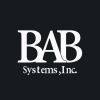
FMP

BAB, Inc.
BABB
PNK
BAB, Inc. franchises and licenses bagel and muffin retail units under the Big Apple Bagels (BAB), My Favorite Muffin (MFM), and SweetDuet (SD) trade names in the United States. It's BAB franchised brand consists of daily baked bagels, flavored cream cheeses, premium coffees, gourmet bagel sandwiches, and other related products. The company's MFM brand comprise of various freshly baked muffins and coffees; and units operating as My Favorite Muffin Your All Day Bakery Café featuring specialty bagel sandwiches and related products. Its SD brand includes frozen yogurt products. As of November 30, 2021, the company had 68 franchise units and 4 licensed units in operation in 20 states. BAB, Inc. was incorporated in 2000 and is based in Deerfield, Illinois.
0.9 USD
-0.0049 (-0.544%)
